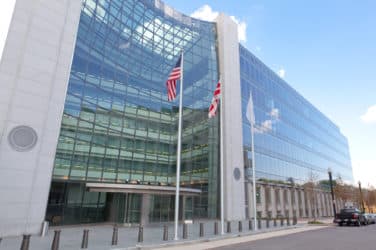New reforms focus on issues that exacerbated the 2015 flash crash
By Eric Pollackov, Global Head of ETF Capital Markets for Invesco PowerShares Capital Management LLC

Eric Pollackov, Invesco
The events of Aug. 24, 2015, were a wake-up call for many in the exchange-traded fund (ETF) industry. After a market selloff in Asia spread to North America on that day, a flash crash ensued — creating upheaval in the US equity markets. In addition to widespread market volatility, ETFs were hurt by diminished liquidity and price dislocation. This was due in part to the breakdown of trading mechanisms that were designed to prevent volatility.
Within a year, the Securities and Exchange Commission (SEC) enacted several changes designed to stem market volatility, including abolishing its controversial Rule 48 — a mechanism designed to ensure orderly trading, but one that created its own set of problems.
Left unresolved were harmonization between exchanges and the shortcomings of “limit-up/limit-down” rules. These rules were originally intended to put the brakes on extraordinary market volatility by halting trading in a security. But they occasionally do the reverse by reducing price visibility and preventing a security from recovering after a sharp price drop.
These issues are now being addressed. On Jan. 19, the SEC moved to amend its circuit breaker rules — formally known as The National Market System Plan to Address Extraordinary Market Volatility — by adopting what’s known as Amendment 12.
What is Amendment 12?
Amendment 12 establishes guidelines for reopening trading in securities following a limit-up/limit-down pause. Here are the three key provisions:
1. Following a trading pause, no equity exchange can reopen trading in a security until after the primary listing exchange reopens trading in that security.
This means that liquidity will typically be centralized within the primary market, as opposed to being fragmented across multiple venues for the reopening print. In my view, this attempt at a single point of transparency is essential, particularly during periods of marketwide stress.
It’s important to note that the SEC has set forth an exception to the above rule:
1a. Following a trading pause, the only time trading in a security can resume outside of the primary listing venue is if the primary listing exchange is experiencing problems related to its systems or technology.
This is a precautionary measure that provides redundancy in the event of a technology breakdown. In such cases, trading would resume at the last effective price band.
2. If a trading pause occurs in the last 10 minutes of a trading day, the primary exchange will, if possible, attempt a closing cross procedure, rather than trying to reopen for continuous trading.
This clarifies how the exchanges would handle a trading pause after 3:50 p.m. ET. Rather than re-establishing continuous trading for 10 minutes or less, priority is given to an orderly close.
3. Exchanges may create synthetic price bands when attempting to reopen after a trading pause and there is a reference price available, but no limit-up/limit-down price bands available.
Even a miniscule amount of time between a trading halt and the creation of a new trading range can lead to severe price dislocation for orders in the queue. The dislocation occurs when trading starts before publication of new price bands. The goal of providing synthetic (consistent) price bands across exchanges is to prevent this “leaky band” syndrome.
The changes set forth in Amendment 12 should reduce the number of repeat trading pauses in a single stock or ETF, in my view. I believe they represent progress toward establishing a more standardized process across primary listing exchanges for reopening trading following a trading pause.
More specific information about the SEC’s official approval order for Amendment 12 can be found here.
Important information
Header image: Rawpixel.com/Shutterstock.com
An opening print represents the opening price of a security, as determined by the day’s first trade in that security.
Limit-up/limit-down mechanisms (also called “circuit breakers”) halt trading in a security when its price reaches a percentage level above or below an average reference price during a specified period — often five minutes. These mechanisms are designed to stem extraordinary market volatility.
Volatility measures the standard deviation from a mean of historical prices of a security or portfolio over time.
Eric Pollackov
Global Head of ETF Capital Markets
Invesco PowerShares Capital Management, LLC
Eric Pollackov is Global Head of ETF Capital Markets for Invesco PowerShares Capital Management, LLC. In this role, Mr. Pollackov proactively develops relationships with sell-side trading desks, implements PowerShares’ ETF capital markets strategies and develops and measures the success of client business plans.
Before joining Invesco PowerShares in 2016, Mr. Pollackov was head of ETF capital markets for Charles Schwab. Previously, he served as managing director of exchange-traded products at NYSE Euronext. He began his career in 1999 as a derivatives trader for Susquehanna International Group, specializing in ETFs.
Mr. Pollackov earned a bachelor’s degree from The State University of New York at Buffalo and holds the Series 7 and 24 registrations.






